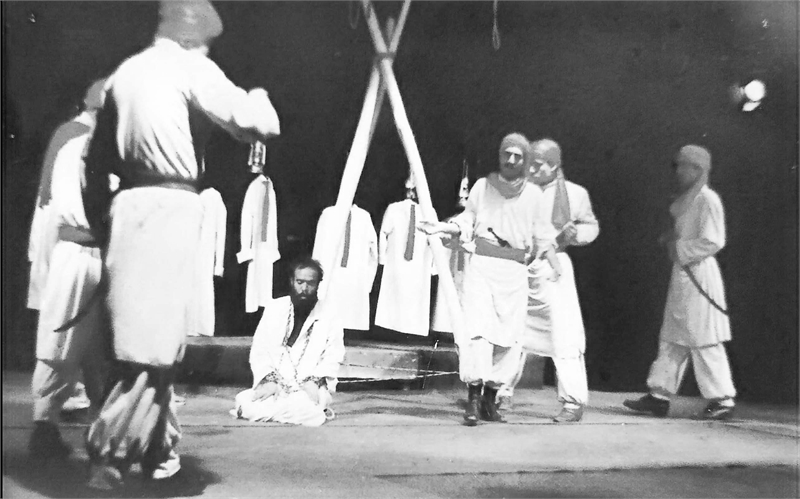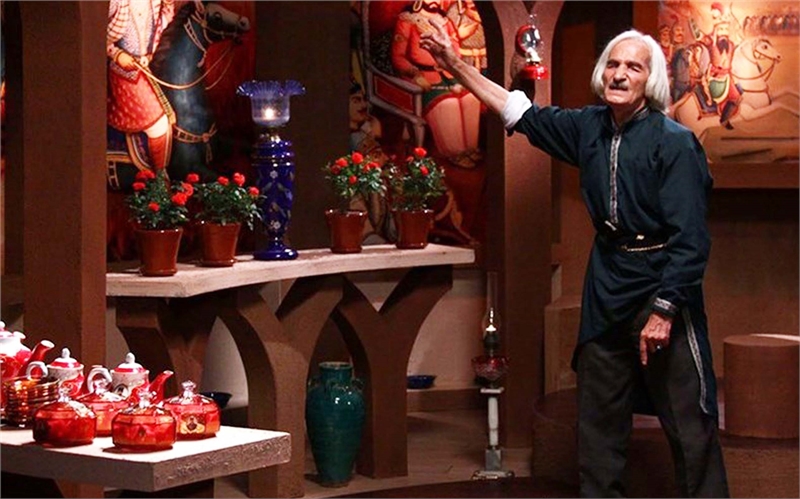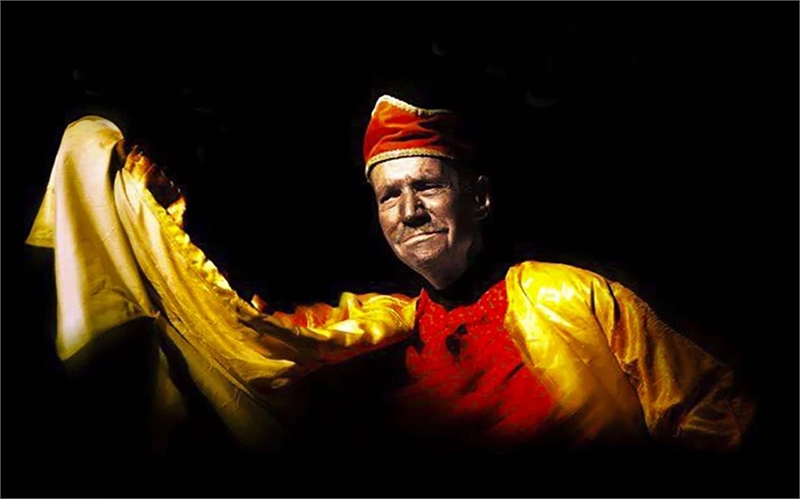The contemporary theatre seen today in Iran is largely alike Western traditions of performance that developed during the twentieth century. Modern theatre artists have created a unique, culturally-specific style of theatre that blends Western styles with traditional modes of Persian performance.At the start of the twentieth century, Iran's relationship with industrial nations fundamentally changed. With the global demand for fossil fuels growing rapidly in the 1909 cultural exchange flourished between Iran and Europe too. Persian translations of plays by Shakespeare, Ibsen, and Chekhov, etc were the first taste of a Western theatrical aesthetic for much of the Iranian public, and this style of playwriting was very influential on Iran's earliest native playwrights. Some of the prominent translators of theaterical works in Iran are Mr. Mirza Fatali, Mr. Akhundzade, Mr. Dariush Mo'addabian, Mr. Ahmad Kamyabi Mask, Mr. Reza Shirmarz, Mr. Hamid Samandarian, Mr. Sadreddin Zahed, Mr. Parwiz Sayyad, etc.
The first Iranian school of theatre, Madrese-ye Ta'atr-i Shahrdari, was opened in 1939 by a collection of Iranian theatre artists, and other schools soon followed. In 1964, the Faculty of Dramatic Arts was established, which became the first institution of higher education in Iran to offer a diploma equivalent to a Bachelor's degree. In 1965, the University of Tehran created the Faculty of Theatre, which finally incorporated theatrical pedagogy within already existing Iranian universities.[18] The theatre program at the University of Tehran was particularly successful, and its influence can be seen throughout contemporary Iranian theatre-making. The university setting provided increased opportunities for theatrical experimentation, and out of this emerged a strong tradition of Iranian theatre direction. Mr. Hamid Samandarian, Mr. Ali Rafii, and Mrs. Pari Saberi are among the most active and influential of this first generation of modern Iranian directors, and their theatre backgrounds all derive from a mixture of both experience and pedagogy within Iran and Europe.
Mr. Hossein Abbasi Nia was born in 1955 in the city of Zanjan, Iran, and continues to reside there. He began his career in the performing arts in 1976. Mr. Abbasi Nia has authored numerous plays and several books on oral literature and the culture of Zanjan. He has been a theater instructor, a judge at various national festivals, and continues to work as a playwright and theater director. Mr. Hossein Abbasi Nia is one of the veteran masters of the performing arts.
The 1960s was a time of great artistic and literary output in Iran, fueled by a new generation of Iranian writers, artists, and intellectuals. A modern form of Iranian playwriting grew out of this movement, led by the luminaries Mr. Bahram Beyzai, Mr. Akbar Radi, Mr. Ali Nassirian, and Mr. Bijan Mofid. These playwrights found inspiration in the works of Samuel Beckett, Bertolt Brecht, Eugène Ionesco, and their contemporaries, although their work also builds on Persian styles such as Ruhowzi, and Naghali.
The name of the theater: Malakoot, 1985, The Fourth Fajr national theater festival, Writer and Director: Mr. Hossein Abbasi Nia, Actors: Mr. Hossein Abassi Nia, Mr. Ebrahim Frid Rad, Mr. Mahmod Arabkhani, Mr. Sa’eed Khatibi, Mr. Ali Akbar Osanloo, Mr. Azizollah Zargari, Mr. Hamid Mortazavi, Mr. Abdollah Ghasedi, Mr. Mozaffar Torabi, Mr. Yadollah Kaseb Vatan.
Ritual and traditional performances such as Ta’zieh, Naghali, Shahnameh Khani, Parde Khani, Kossa Galin, and Takam Gardani are not only tools for entertainment, energy release, and expression of feelings, but also serve as means of conveying our values, beliefs, and national identity. These performances have always held a special place in Iranian history and culture, and they continue to transmit cultural and social values to future generations, serving as a bridge between the past and the present.Traditional ritual performances not only preserve historical and mythological events but also help convey past experiences and philosophical concepts of life and ethics.
These performances are particularly important in strengthening national and s ocial spirit by creating a shared space for social solidarity and representing cultural identity They also serve as narrators of Iran's history and myths, acting as a living medium. By retelling national , epic and folklore stories, these shows help the audiences to get acquainted with their historical and religious past through attractive and dynamic art and keep it in their minds and help people by presenting manifestations of the life and customs of the past.By retelling national, epic, and folklore stories, these performances help audiences become acquainted with their historical and religious past through engaging and dynamic art.
They preserve this heritage in people's minds and offer insights into the life and customs of the past. They also help people better understand their cultural identity and take pride in it. These performances provide a suitable platform for showcasing Iranian arts, such as traditional music, drama, and literature. In this way, younger generations become familiar with various local arts and artistic techniques, fostering an interest in preserving and promoting this cultural heritage. In today’s modern and globalized world, ritual and traditional performances serve as effective tools against cultural diffusion by strengthening cultural identity and raising awareness of Iran's rich heritage.
Mr. Davood Fathali Beygi was born in 1950 in Tehran, Iran. He entered Zanjan as a theater expert in 1977 and lived in Zanjan for several years and played an important role in the growth of Zanjan theater. He has been active in the field of traditional and ritual theater for over half a century. He is a graduate of the Fine Arts University. Mr. Davood Fathali Beygi has made significant contributions to Iranian traditional and ritual theater as a writer, director, and actor, authoring and publishing dozens of books and plays. He is a university professor with a PhD in Arts and has served as the secretary of numerous traditional and ritual theater festivals, as well as a judge for several national and international festivals. Mr. Davood Fathali Beygi is one of the most prominent and veteran masters of the performing arts in Iran.
These performances help people resist the negative effects of foreign cultures and preserve their cultural values by using familiar stories and symbols. They convey complex social, moral, and religious concepts in a simple and understandable way. As one of the most valuable aspects of Iranian culture, they play a vital role in preserving and transmitting the intangible cultural heritage of the region. Ritual and traditional performances are not only a part of Iran's past history and culture but also a living, dynamic element in shaping the present and future national and cultural identity of the region.

The name of the theater: Meysam Tammar, 1982, The First Fajr national theater festival, Writer: Mim- Alef Fajr, Director: Mr. Davood Fathali Beygi, Actors: Mr. Ali Akbar Osanloo, Mr. Ebrahim Frid Rad, Mr. Fathi, Mr. Amir Sahami, Mr. Azizollah Zargari, Mr. Abdollah Qasedi, Mr. Mehi Jarayan Qalam, Mr. Ali Reza Fraid Rad.
The performing arts in Iran:
Naqqali,
The Naqqal is the performer and recounts stories in prose often accompanied by music, dance and decorative, painted scrolls. The performer often wears simple costumes and a single piece of a historical but related costume, like one old piece of armour. This art was formerly performed in coffeehouses, private houses and historical venues such as ancient caravanserais.
A decline in the popularity of coffeehouses in Iran, and with new forms of entertainment, has resulted in diminishing interest in Naqqali performance. The aging of master performers, (who are called morsheds) and the decreasing popularity among younger generations have caused a steep drop in the number of skilled Naqqāls, threatening the survival of this dramatic art. Naqqali was included in 2011 to the UNESCO's Representative List of the Intangible Cultural Heritage of Humanity in need of urgent safeguarding.

Mr. Valiollah Torabi, also known as Morshed Torabi, was born in 1936 in Tafresh County, Markazi Province, Iran. He was a renowned and skilled storyteller, one of the most prominent masters of the art of storytelling in Iran. He passed away in 2013.
Ta’ziye,
Ta’ziye is a kind of religious theater about the karbala event. The word Ta’ziye means mourning. The main name of Ta’ziye is Shabih khaki or Shabih gardani. Shabih in Persian is similar and Shabih khani's performers or actors play similar roles of main characters of karbala. Ta’ziye or shabih khani is the traditional form ofritual and religious performances based on historical epics and sad events of Karbala about martyrdom of Imam hussein and his companions and also the sufferings of the prophet Mohammad's family peace be upon him.

Ta’ziye in Meshkin village, Zanjan, Iran
Kheimeh shab bazi,
Kheimeh-shab-bazi is the Persian traditional marionette puppetry which is performed in a small chambered tent.The tent is open from one side only and there are two people involved in the performance: a musical performer and a person telling the story (called a morshed). The dialogue is between morshed and the puppets. The method of performance, its characters and the techniques used in writing the puppet show make it unique and distinguish it from other types of puppetry.

Kheimeh shab bazi
Siah-bazi and Ru howzi,
Siyah-bazi is a type of Iranian folk performing art that features a blackface, mischievous and forthright harlequin that does improvisations to stir laughter. The term siah-bazi literally translates to "playing black" and is a sketch in which two men dressed in red turbans, one has black face paint and they engage in a verbal duel which is often witty, political in nature and humorous. The character with the black face takes on a clown-like role and tries to disgrace the master.
Ru Howzi is an improvised comical theatre act on domestic life. Ru Howzi is practiced through rehearsals and oral traditions and as a result each troupe may have unique features to the performance. The performances often involve shtick comic routines mimicking other languages/dialects, and physical or visual humor. Siah-bazi and Ru howzi both have a blackface clown character and involve lewd jokes, but Ru howzi is a social theatre that satirizes domestic life and is often performed at private Iranian residences on a stage over a pool of water that is often found in home courtyards. Siah-bazi is performed in more public places like theaters or coffee houses because of the political subject matter.

Mr. Sa’dollah Rahmat Khah, also known as Sa’di Afshar, was born in 1934 in Zanjan Province. He was a talented actor, particularly renowned for his siah-baazi roles, and one of the most prominent masters of blackface performance in Iran. He passed away in 2013.
Pardeh khani,
Pardeh khani is a screen-based storytelling act with painted images held by the performer as a narrative tool. Similarly, pardeh khani is visual storytelling read off a screen on a wall, often a wall in a coffee house. The storyteller is called a pardeh khan, and in the process of performing they would use a pointer to visually emphasize the story. The imagery found in these types of performances can be separated into three categories, epic paintings (stories such as Shahnameh, the Death of Siyavash, Rostam and Sohrab, among others), romantic paintings, and religious paintings.
Pardeh Khani, The name of the theater: Yoose and ZoliykhaWriter: Mim- Alef Fajr, Writer and Director: Mr. Davood Fathali Beygi, Actors: : Mr. Davood Fathali Beygi, Mr. Mohammad Haj Mohammadi (Siah)
---------------------
This article was contributed by Mr. Akbar Karimi, the international reporter for Arirang Culture Connect and the Founder and Managing Director of the Samte Ganjineye Ghoghnoos Cultural-Artistic Institute in Iran. His leadership in preserving and promoting Iranian intangible cultural heritage, along with his extensive experience in cultural-artistic research and his active participation in international forums such as UNESCO and ICCN, enriches his contributions to the global cultural dialogue.
This text has been prepared and presented at the suggestion of the General Directorate of Culture and Islamic Guidance of Zanjan Province, in honor of MR.davood Fathali Beygi and Mr. Hossein Abbasi Nia who have dedicated over half a century to representing Iranian culture and art in Theater.
Translator of biographical parts and the director of international relations of Samte Ganjineye Ghoghnoos Institute: Mrs. Farnaz Seydi.